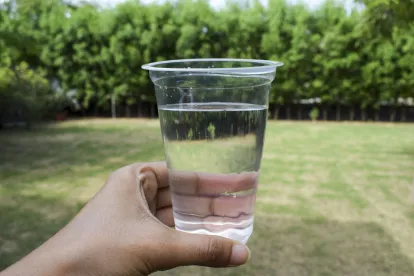Key Takeaways
-
What Is Happening? On September 14, 2022, the U.S. Environmental Protection Agency (EPA) Region 1 exercised its Clean Water Act (CWA) Residual Designation Authority to require National Pollutant Discharge Elimination System (NPDES) permits of previously unregulated commercial, industrial, and institutional (CII) sources across three Massachusetts watersheds. This is the first time EPA (or any authorized state) has exercised Residual Designation Authority on such a broad geographic scale or for such a wide variety of sources.
-
Who Is Affected? In the near term, the designation will impact un-exempted CII properties with one acre or more of impervious surface—such as golf courses and private schools—in the Charles River watershed, Mystic River watershed, and Neponset River watershed of eastern Massachusetts. (See EPA Designation at Attachment 1 for the full list of communities). Longer term, the action provides a roadmap for other EPA regions and states seeking to exercise RDA authority on a broad, categorical scale.
-
What Should I Do? Designated facilities do not need to apply for an individual NPDES permit. Instead, EPA Region 1 plans to implement the designation by issuing one or more general NPDES permits for applicable stormwater discharges, under which operators may seek coverage within defined deadlines in the general permit(s). EPA will provide public notice of the draft permit(s) and hold a public comment period of at least 30 days. EPA also announced that “[t]he question whether the initial designation was proper will remain open for consideration during the public comment period under § 124.11 [for NPDES permits] and in any subsequent hearing.” 40 C.F.R. § 124.52(c). Facility owners, operators, and related trade associations potentially affected by this action should consider submitting public comments by the public comment deadline(s).
Background
Residual Designation Authority, or “RDA,” is a rarely used “catch all” provision of CWA Section 402 that authorizes EPA and states with approved permitting programs to require NPDES discharge permits of otherwise unregulated sources of stormwater where EPA or the authorized state determines the discharge (1) “contributes to a violation of a water quality standard” or (2) “is a significant contributor of pollutants to waters of the United States.” 33 U.S.C. § 1342(p)(2). EPA’s implementing regulations provide that EPA and authorized states may also exercise RDA where “stormwater controls are needed for the discharge based on wasteload allocations that are part of total maximum daily loads (TMDLs) that address the pollutants of concern.” 40 CFR 122.26(a)(9)(i)(C). EPA maintains that RDA may be exercised on either a case-by-case or categorical basis.
An onslaught of recent petitions for rulemaking and litigation is responsible for bringing this historically quiet provision of the CWA into its present sharp focus. This particular exercise of RDA responds to a 2019 petition by the Conservation Law Foundation and the Charles River Watershed Association to designate certain then-unregulated commercial, industrial, institutional, and residential stormwater dischargers in the Charles River watershed as sources required to obtain an NPDES discharge permit. In 2020, Conservation Law Foundation submitted two additional petitions requesting the same determination for dischargers in the Mystic River and Neponset River watersheds. The petitions argued that these properties are responsible for stormwater runoff with high nutrient and/or bacteria loads to the three watersheds.
The Designation
EPA based this residual designation on the following findings.
-
State-designated impaired waters trigger RDA. The new designations partly rely on the existence of TMDLs to support the Region’s exercise of RDA. Massachusetts Department of Environmental Protection (MassDEP) listed water bodies in all three watersheds as impaired under CWA Section 303(d) due to excess nutrients (phosphorus, nitrogen) and bacteria. As a result of those listings, MassDEP developed various TMDLs, approved by EPA, to address nutrient and bacterial impairments in the three watersheds. For example, two phosphorous TMDLs for the Charles River call for phosphorus reduction by private and public stormwater sources to meet water quality standards.
-
Stormwater controls are necessary to protect water quality. EPA concluded that studies in all three watersheds demonstrate that stormwater is the leading cause of water quality impairments, and stormwater controls are necessary to meet Massachusetts water quality standards. For example, a 2000 MassDEP water quality assessment analysis reported that phosphorus in stormwater runoff caused water quality impairments in almost all Charles River segments. EPA also relied on monitoring data and observations by EPA and by the Charles River Watershed Association.
-
Single and multi-family parcels should be excluded from the designation, and commercial, industrial, and institutional sources should be designated on a per-parcel basis. EPA found that although residential land use (single and multi-family) is the dominant land use in the three watersheds, the average CII parcel in the Charles River watershed discharges significantly higher levels of phosphorus in stormwater than do the average single and multi-family parcels. EPA determined in its technical judgment that this pattern for phosphorus would also apply to nitrogen and bacteria. EPA further determined that its data analysis of the respective shares of pollutant contribution from CII and from single and multi-family parcels in the Charles River watershed could apply to the Mystic River and Neponset River watersheds based on land use similarities.[1]
-
Impervious surface area is the critical factor for designation. EPA found that the amount of impervious surface on a property increases the volume of stormwater runoff and increases the loading of pollutants to waters (e.g., phosphorus, nitrogen, bacteria), and that a one-acre threshold appropriately scopes this designation.
-
Designation is consistent with environmental justice policies and addresses impacts of climate change. EPA concluded that the designation would benefit environmental justice (EJ) communities based on a finding that EJ communities are concentrated in areas with the highest degree of impairment in all three watersheds. EPA also concluded that impacts of climate change result in increased pollutant loadings to the watersheds and that the delegation would moderate those loadings.
Based on these findings, EPA determined that the residual designation and subsequent NPDES permitting of stormwater discharges from non-permitted CII parcels in the three watersheds was warranted.
Who Is Affected in Massachusetts?
The designation applies to non-permitted CII properties, with one acre or more of impervious surface, in numerous communities throughout the three watersheds. For example, the designation observed that there are approximately 14,800 private CII parcels within the Charles River watershed, 12% of which have one acre or more of impervious surface. EPA observed that these parcels contribute to approximately 70% of the overall phosphorus load from all CII parcels within the watershed.
The designation excludes CII parcels that discharge to Municipal Separate Storm Sewer Systems (MS4) covered by the 2016 Massachusetts small MS4 permit, the Boston individual MS4 permit, and parcels owned or operated by the Massachusetts Department of Transportation, Highway Division. EPA’s rationale is that existing permits issued to those entities adequately control nutrients and bacteria in their discharges.
Broader Implications
Whether this broad exercise of CWA Residual Designation Authority is within EPA’s authority and properly supported by the record remains to be seen. Moreover, the procedure followed by Region 1 in adopting this attempt to dictate the appropriate path for administrative and judicial review of this action bear examination.
In the meantime, EPA Region 1’s exercise of RDA and implementation plan could become a roadmap for other EPA regions and authorized states wishing to expand NPDES permitting to additional sources within their jurisdiction. EPA Region 9, for example, recently issued a notice its consideration of a similar exercise of residual designation authority for watersheds in the Los Angeles County region in response to a 2018 district court decision. EPA Region 9 solicited comments on the proposed action during a public comment period that ended on October 24, 2022.
Facility owners, operators, and related trade associations affected by this RDA exercise in Region 1 should consider submitting public comments by the applicable public comment deadline(s). Currently unregulated stormwater dischargers in other locations will want to be on alert for similar petitions requesting designations and agency-generated exercises of RDA in their jurisdictions. Facilities potentially affected by this and any similar exercises of RDA include the following:
-
Shopping centers;
-
Industrial facilities not currently required to hold NPDES stormwater permits, such as many pharmaceutical, telecommunication, and semiconductor manufacturing operations;
-
Administrative office areas, employee parking lots, and other non-industrial portions of currently regulated industrial facilities (other portions of which are currently required to hold NPDES stormwater permits);
-
Airports (landslide runoff);
-
Hospital and other health care facilities (except those that are currently nontraditional MS4 permittees);
-
Colleges, universities, and community colleges (except those that are currently nontraditional MS4 permittees);
-
Public schools (except those that are currently nontraditional MS4 permittees);
-
Automobile race tracks; and
-
Utility-scale solar sites.
FOOTNOTES
[1] Although EPA has focused on CII parcels for this designation, EPA plans to further evaluate the stormwater impacts from multi-family parcels in the future.






 />i
/>i
